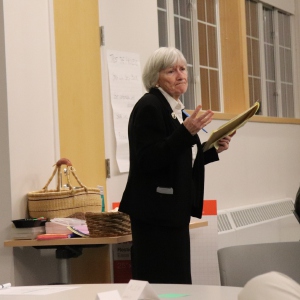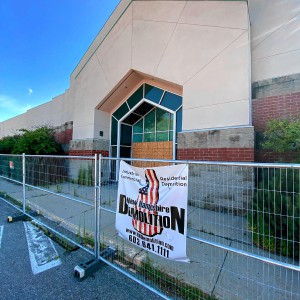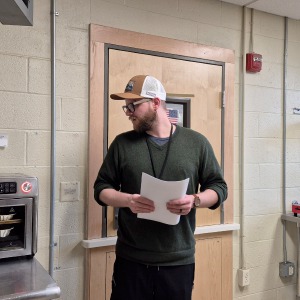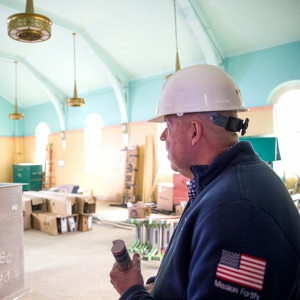Updated Concord middle school design to cost another $3 million
| Published: 04-08-2025 7:45 PM |
For a school district trying to realize a near-decade-long plan to replace its middle school, the trifecta of tariffs, no state building aid and rising inflation cast long shadows.
“There isn’t a cheap option to fix all of the problems at Rundlett,” Board President Pamela Walsh said Tuesday. “But we have to do something.”
The next step in that process is to get a design for a new building at Rundlett Middle School’s current home on South Street.
While residents told Concord’s school board it was what they wanted, deciding to rebuild at Rundlett added extra costs to the plan.
On Monday, the board agreed to pay an extra $3 million to HMFH architects who will draw up a design for the South Street location while reusing what they can from their plans for the previous spot. On top of the existing contract, the firm is due to be paid $13.3 million for its design work on this one project.
As currently laid out, architects would design the $164 million building originally envisioned, and at some point, the board would make cuts based on what it doesn’t feel are affordable or needed. The district took the same approach last year, when a $176 million estimate eventually became $152 million. A fresh price tag would come out in August, according to the district’s timeline.
Board members said Monday they want to whittle down the proposal until it’s something they can live with. They want a full design in the short term so that, should they need to hit pause, they have something in hand they could jumpstart later.
“We need to know what trade-offs we can make, and I think the community needs to know,” Walsh said in a recent committee meeting. “I think we need a more detailed choice list than we did the first time around.”
Article continues after...
Yesterday's Most Read Articles
 Concord superintendent joins over 100 school leaders in signing controversial DEI certification, but says equity work will continue
Concord superintendent joins over 100 school leaders in signing controversial DEI certification, but says equity work will continue
 Another lawsuit delays Steeplegate Mall demolition
Another lawsuit delays Steeplegate Mall demolition
 Propane tanker truck rolls over on I-93, holds up traffic
Propane tanker truck rolls over on I-93, holds up traffic
 Federal judge finds Bow School District’s actions ‘entirely reasonable’ in transgender athlete protest by parents
Federal judge finds Bow School District’s actions ‘entirely reasonable’ in transgender athlete protest by parents
 Transitional housing at risk after New Hampshire lawmakers vote to sell state-owned building
Transitional housing at risk after New Hampshire lawmakers vote to sell state-owned building
 New Hampshire set to ‘welcome home’ veterans with new 15-acre campus in Franklin
New Hampshire set to ‘welcome home’ veterans with new 15-acre campus in Franklin
Multiple members of the board’s building committee suggested a different approach: set a cap for the project first and ask architects to tailor a design to that cap.
“I can see value in, ‘let’s design the building we can afford’ — it may not have a theater, it may not have all these things we all wish we could have,” said Kate Vaughan, a district parent on the committee. “But if that's what we can afford, that's the building we should be designing.”
For Ric Brewster, a construction management professional on the committee, setting a cap from the outset would give the district more control over the project despite ballooning expenses — and give taxpayers some peace of mind.
“What’s that number that we can probably sell to the town before we authorize spending more money,” he said. “We can’t get to $200 million and expect the taxpayers to sit still for it.”
Concord waited years for the state to lift its moratorium on aid to school building projects and, once that happened, waited years more to get to the front of the line for money.
This biennium, with Concord second in line for aid, state lawmakers have set aside no money in either the House or Governor’s budget for the program.
The board has said it will stay in line for this money. But at some point, Walsh noted Monday, the board has to commit to a project rather than wait.
Over the years, alongside other delays and inflation, the cost for this project nearly doubled.
“If we keep waiting for state aid that doesn't come,” Walsh said, “what state aid [there] might be will be eaten up by construction inflation.”
The district has also long eyed building aid as a bigger lifeline than it was going to get.
Even if the state fully funded it this biennium, the district could get no more than around $32 million in aid, but due to the design and other factors, the actual amount is closer to $20 million.
Even in a best-case scenario, a $164 million project would still add more than $450 onto the tax bill of a $350,000 home, a recent district estimate states.
Some residents, including some who have long called for a “Rebuild at Rundlett,” have recently demanded the board reconsider renovation.
In 2017, the board decided to build anew rather than renovate Rundlett Middle School. The costs would be greater, they were told, and the final product would be worse and take longer.
While the dollar figures have certainly changed since then, the underlying dynamic has not.
“The short answer is,” said Keith Kelley, director of preconstruction and planning at Harvey Construction, “I wouldn't find any savings in a renovation project of this magnitude.”
Harvey and HMFH examined what a renovation of the current 1957 building would entail.
The long answer, they said, is that it would mean finding ways to make the elevators, stairs, labs and doorways compliant with the Americans with Disabilities Act, rearranging classrooms to meet regulation size and adding structural braces to the building’s bones itself. It would require a new roof and a replacement of all HVAC.
Most notably, it would mean five to six years of phased construction, where a portion of students learn in 16 modular classrooms as one wing of the building is rebuilt at a time. Rental rates for temporary classrooms, according to Kelley, would come in around $2 million per year. Phased construction, he added, is also less desirable work to subcontractors, increasing labor rates.
“I’m thoroughly convinced that the existing building doesn't meet the needs of the students currently for educational purposes,” said Nicole Fox, a parent and civil engineer on the building committee. “And that trying to repair the existing school is just going to end up costing all the residents of Concord more money in the long term.”
Lisa Beaudoin, a disability advocate, described the building as “ te rrible” and renovation as “totally the wrong direction.”









 Hospitals sue state over NH’s Medicaid tax
Hospitals sue state over NH’s Medicaid tax Federal officials to review Bow parents’ free speech lawsuit regarding transgender athletes
Federal officials to review Bow parents’ free speech lawsuit regarding transgender athletes  Flooding from collapsed beaver dam shuts portion of Elm Street in Concord
Flooding from collapsed beaver dam shuts portion of Elm Street in Concord Bassett to retire from New Hampshire Supreme Court
Bassett to retire from New Hampshire Supreme Court
